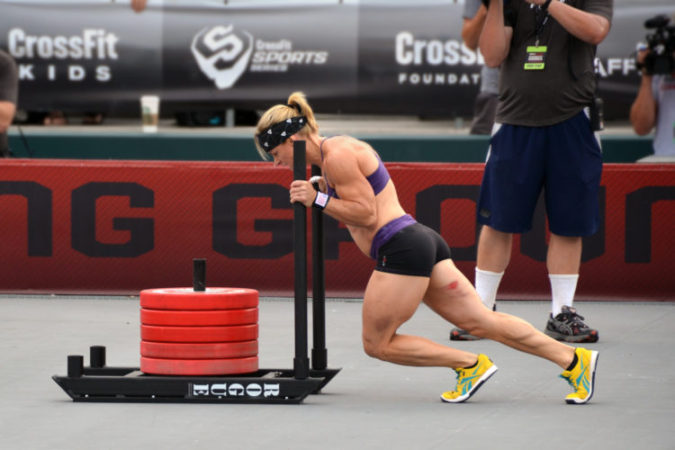Designing a workout is far more than just picking your favorite exercises. Just like when you are creating a long-term training plan, we have to think of number of repetitions, sets, length of rest and repetition tempo. Your performance is dependant on the actual level of fatigue or stress.
Energy systems of your body
Maybe you remember molecule of ATP from your biology classes. It’s the basic form of energy acquired by cleavage of trivalent bonds. In human muscle cells there are three energy systems to restore ATP:
- phosphagen system
- anaerobic glycolysis
- oxidative system
These systems cooperate and complement each other at all times.
Phosphagen (ATP-CP) system is dependant on creatinphosphate, which is stored directly in muscle cells. The body can use CP to provide energy for intensive and shortlasting activity (15s max). For example lifting a heavy boulder of the ground or a 60m sprint. This system operates anaerobically, meaning without oxygen.
When ATP-CP system depletes its capacity, anaerobic glycolysis comes in play. Just from its name we can see that this system doesn’t also use oxygen. The fuel for restoring ATP are carbohydrates (even though very ineffeciently), from glucose or glycogen. The next time you’re running a 400m sprint, remember this little fella, because this system fuels intensive activities lasting up to 110 seconds. Carbohydrates that are processed in glycolysis create pyruvate, a substance that is turned into lactate, in absence of oxygen. When the activity is lasting longer then 110 seconds in the same intensity, tissues are unable to metabolise all the lactate, which accumulates in them and slowly decreases pH – that’s the feeling of a burning muscle. Muscle cells lose their power capacities and makes you move slower, at more tolerable pace.
Glycolysis isn’t necessarily an anaerobic process. If we’re training at lower intensities and we are capable to get enough oxygen to our muscle cells, pyruvate is turned into acetyl-coenzyme A. This substance undergoes Krebs cycle, where it’s used to create ATP. Aerobic glycolysis is a functional part of Krebs cycle, which is primarily included to the third energy system.
Oxidative system is using fats and proteins as fuel in aerobic conditions. Triglycerides (the main part of fat) are slowly released and fatty acids are converted to acetyl-coenzyme A again, but many times more efficiently then during glycolysis. Acetyl-coenzyme A is again took into Krebs cycle, where it’s used to create ATP. Body uses proteins in highly unfavorable scenarions, during starving or very long lasting loads. Some of the aminoacids are unique for their availability in aerobic conditions, as they can be too converted to acetyl-coenzyme A and furthermore, to ATP.
As mentioned before, all three systems are always active simultaneously. For example, let’s use track running. We must always consider the INTENSITY and LENGTH of exercise. Even though all three systems are active, in the first 10s of run (sprint) the dominant system is ATP-CP. When you can’t sprint any longer, the most dominant system for energy coverage will be anaerobic glycolytic system. As the fuel for glycolysis runs empty, your speed will be decreasing, until you are no longer able to run and only walk further.
Let’s try another example. You are sitting by a desk in your room. You get up from the chair, walk to open the window and sit back again. This whole action took 10 seconds. Which of the energy systems was the most active one?
The correct answer is oxidative system. The intensity of work is ridiculously low and you could maintain it for hours.
On the contrary, during 60m track sprints is ATP-CP the most dominant system, because of the acute need for ATP.
The theory sounds well on paper, but how can you use these informations for creating your workout? The chart shown below could be your answer. The main index is work-to-rest ratio.
| % maximal intensity | Primary energetic system | Average length of exercise | Work-to-rest ratio |
| 90-100 | Phosphagenous | 5-15 s | 1:12 až 1:20 |
| 75-90 | Glycolytic | 15-60 s | 1:3 až 1:5 |
| 30-75 | Glycolytic + oxidative | 1-3 min | 1:2 až 1:4 |
| 20-35 | Oxidative | >3 min | 1:1 až 1:3 |
Another example: you are training for relative strength. You are completing sets of 3 repetitions. The tempo of exercise is 4010, meaning 4 seconds of decelerating the weight, 0 at bottom, 1 second of accelerating weight, so 1 repetition takes 5 seconds and the whole set is completed in 15 seconds. You are primarily targeting your phosphagenous system and the rest must be long enough for recovery of the central nervous system. By looking at the chart and work-to-rest ratio, we know our rest must be at least 3 minutes to max 5 minutes long.
This calculations can’t be used at all times, for example in superset training. Usually we use this training system to improve body composition, and we want to accumulate the maximal amount of lactate, because the lactate levels directly relate with the flooding of catecholamines and growth hormone. These have direct lipolytic effect. Accumulation of lactate is also directly related to EPOC (excess post-exercise oxygen consumption), meaning the increase in metabolism turnover during post-training 48 hours. The point of completing a superset is incomplete rest, so the rest should be somewhere around 30-60 seconds long.








